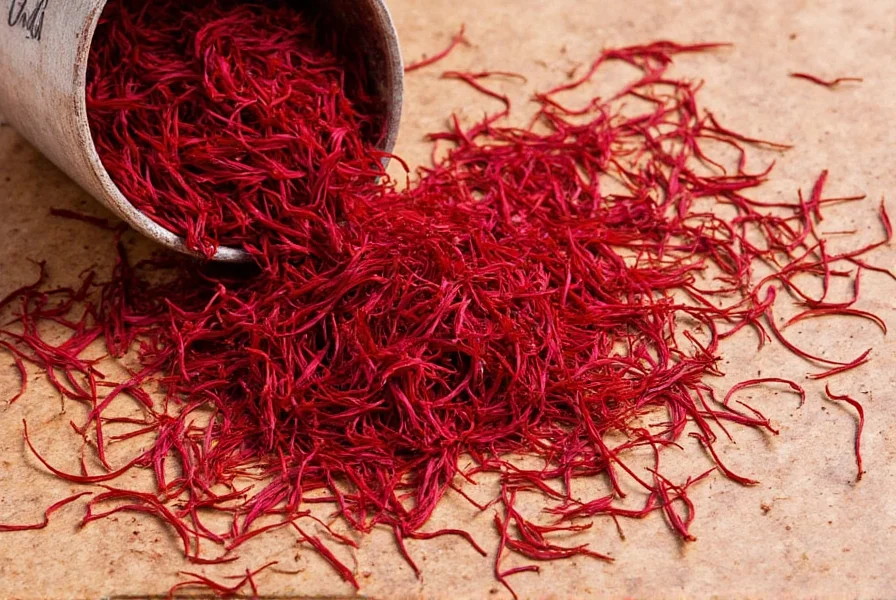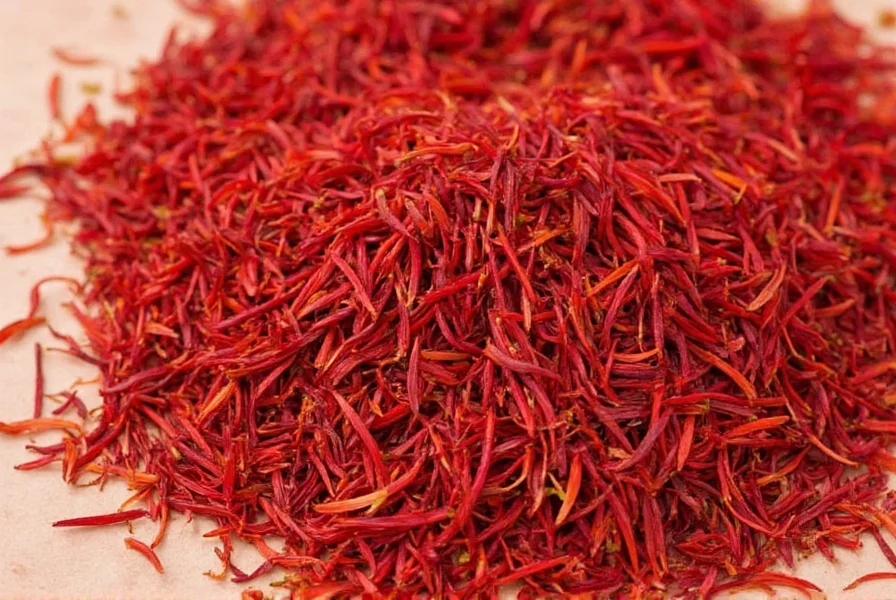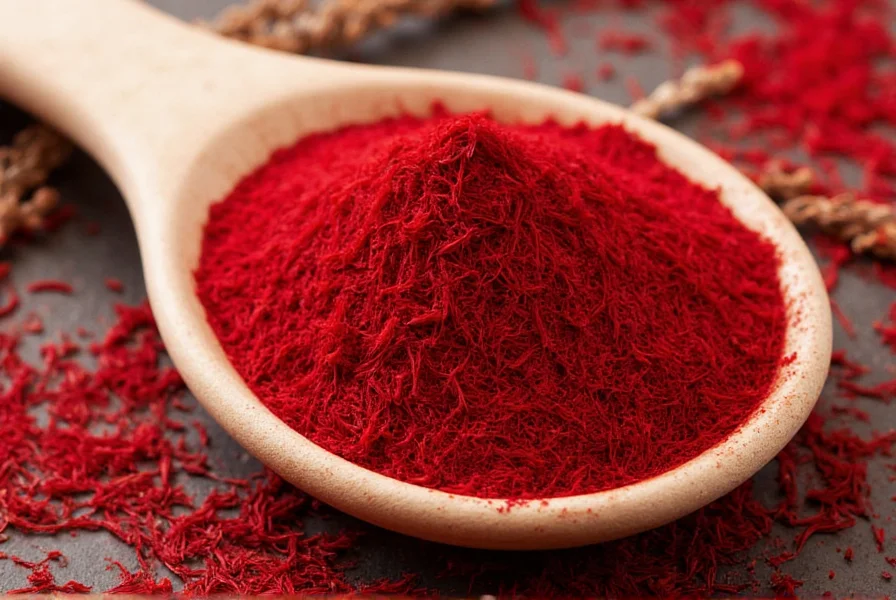Unlocking saffron's full potential requires understanding its unique properties. This crimson spice, derived from Crocus sativus stigmas, delivers an unmistakable floral-honey aroma and vibrant golden color. When properly prepared, saffron transforms simple ingredients into extraordinary dishes. Let's explore how to use this precious spice effectively across global cuisines.
Understanding Saffron Quality and Preparation
Not all saffron delivers the same results. The highest grade, coupé or mancha, contains mostly red stigmas with minimal yellow style. Lower grades contain more yellow style, which contributes color but little flavor. When purchasing saffron, look for deep red threads that feel brittle and release a strong aroma when crushed between your fingers.
Proper preparation maximizes saffron's impact. Always bloom saffron before use:
- Crush 15-30 threads with a pinch of sugar using a mortar and pestle
- Add to 2-3 tablespoons of warm liquid (broth, water, or milk)
- Steep for 15-30 minutes until the liquid turns deep yellow
- Add both threads and liquid to your recipe
This process extracts saffron's volatile compounds far more effectively than adding dry threads directly to dishes.

Top Authentic Saffron Recipes by Category
Main Dishes
Valencian Paella represents saffron's most famous application. Authentic versions use bomba rice, rabbit, chicken, green beans, and snails (optional), with saffron providing the signature golden hue and floral notes that balance the dish's richness. The key is adding bloomed saffron during the final minutes of cooking to preserve its delicate flavor.
Persian Tahdig features saffron in both the rice and the crispy bottom layer. Mixing bloomed saffron with yogurt creates the distinctive yellow pattern on this celebratory rice dish. The saffron not only colors but also subtly flavors the entire pot through steam infusion.
Breads and Baked Goods
Swedish Lussekatter (saffron buns) showcase how saffron transforms simple dough into festive treats. The spice's floral notes complement the cardamom and raisins perfectly. For best results, steep saffron in the warm milk used in the dough, allowing maximum flavor extraction before mixing.
Italian Risotto alla Milanese demonstrates saffron's ability to elevate simple ingredients. Just 20 threads transform plain rice into a luxurious dish that pairs perfectly with osso buco. Add the bloomed saffron during the last five minutes of cooking to preserve its delicate aroma.
Desserts and Beverages
Saffron-Infused Panna Cotta offers a sophisticated dessert where the spice's floral notes shine against the creamy backdrop. Steep saffron in the warm cream mixture before adding gelatin for even distribution of flavor and color.
Middle Eastern Saffron Tea provides a simple preparation method: steep 5-10 threads in hot water with a slice of lemon for 5-10 minutes. This soothing beverage highlights saffron's therapeutic properties while delivering its distinctive flavor.
Saffron Value Maximization Guide
Given saffron's high cost (up to $5,000 per pound), smart usage is essential. The table below shows how to maximize value across different recipe types:
| Recipe Type | Threads Needed | Preparation Method | Cost per Serving |
|---|---|---|---|
| Rice dishes (4 servings) | 20-30 | Bloom in cooking liquid | $0.50-$0.75 |
| Baked goods (12 items) | 15-20 | Mix with wet ingredients | $0.08-$0.12 per item |
| Sauces & stews (6 servings) | 25-35 | Add during final simmer | $0.60-$0.85 |
| Desserts (8 servings) | 10-15 | Infuse in dairy base | $0.25-$0.40 |
Common Saffron Mistakes to Avoid
Many home cooks waste saffron through improper techniques. The most frequent errors include:
- Adding dry threads directly to recipes - This prevents proper flavor extraction
- Using excessive amounts - More than 50 threads typically creates bitter, medicinal flavors
- Adding too early in cooking - Heat degrades saffron's delicate compounds over time
- Storing improperly - Saffron loses potency when exposed to light, heat, or moisture
For optimal storage, keep saffron in an airtight container in a cool, dark place. Properly stored, it maintains quality for 1-2 years. Freezing extends shelf life to 3-4 years with minimal flavor degradation.

Saffron Substitution Guide
While no substitute perfectly replicates saffron's unique flavor profile, these alternatives work in emergencies:
- Turmeric + paprika - Provides color but lacks floral notes (use 1/4 tsp turmeric + pinch paprika per 15 saffron threads)
- Annatto seeds - Offers similar golden color with earthier flavor (steep 1/2 tsp seeds in warm liquid)
- Safflower - Sometimes called "poor man's saffron" for its similar color but different flavor
Remember that substitutes only address color, not saffron's distinctive aroma. For authentic saffron dishes, the real spice is worth the investment when used properly.
Frequently Asked Questions
How many saffron threads should I use per serving?
For most dishes, 3-5 threads per serving provides optimal flavor without bitterness. Rice dishes typically require 15-30 threads for 4 servings, while desserts need fewer—about 10-15 threads for 8 servings. Always bloom saffron in warm liquid first to maximize extraction.
Can I substitute saffron powder for threads?
Yes, but with caution. Saffron powder loses potency faster than threads. Use 1/4 teaspoon powder to replace 20 threads, but check freshness first—stale powder delivers weak flavor. For best results, grind threads yourself just before use rather than purchasing pre-ground saffron.
Why isn't my saffron coloring my dish properly?
Poor color extraction usually happens when saffron isn't properly bloomed. Always crush threads with sugar first, then steep in warm (not boiling) liquid for 15-30 minutes before adding to your recipe. Using insufficient threads (less than 15 for 4 servings of rice) or adding dry threads directly also prevents proper coloring.
What dishes pair best with saffron's flavor profile?
Saffron complements dishes with mild bases that allow its floral notes to shine. It works exceptionally well with rice, seafood, chicken, artichokes, potatoes, and dairy-based sauces. Traditional pairings include Spanish paella, Italian risotto, Persian rice dishes, and Scandinavian baked goods. Avoid pairing with strongly flavored ingredients that would overwhelm saffron's delicate aroma.
How can I verify if my saffron is authentic?
Authentic saffron threads should be deep red with minimal yellow base. When placed in warm water, they gradually release a golden-yellow color over 15-20 minutes (not instantly). Rub a thread between fingers—it should leave a yellow-orange stain. Avoid saffron that bleeds color immediately or has a hay-like smell, as these indicate adulteration with safflower or other substitutes.











 浙公网安备
33010002000092号
浙公网安备
33010002000092号 浙B2-20120091-4
浙B2-20120091-4